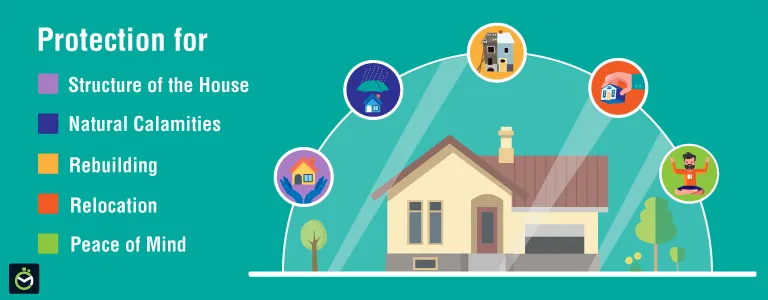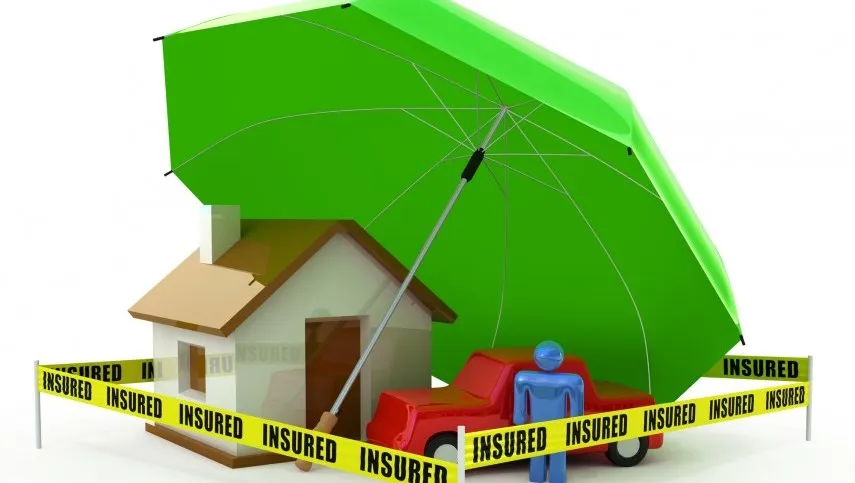When unforeseen events occur, like a fire or a natural disaster, having a good home insurance policy is really important. It can help cover the cost of repairing any damage to your home or replacing anything that was lost or stolen. But if you need to make a claim, knowing what to do is important. By following the right steps and working closely with your insurance company, this article will help you to go through the right steps.
Table of Contents:
What is a Home Insurance Claim
Before diving into the steps first, let’s look into what is Home Insurance Claim is. A home insurance claim is a formal request made by a homeowner to their insurance company asking for coverage or compensation for damage or loss to their property. In simple it is like telling your insurance company that something bad happened to my house and since we agreed that you would help me with it so can you assist me with it now?

When you make an insurance claim, the insurance company will carefully evaluate and assess the damage that has occurred. This is an important step in the claims process, as it helps the insurance company determine the extent of the damage and the cost of repairs. If your claim is approved, the insurance company will either reimburse you for the repairs or directly pay the professionals involved in fixing the damage. This is a crucial aspect of your insurance policy, as it enables you to access the protection that you’ve been paying for.
Different Types of Home Insurance Claims
As we understand what is a Home insurance claim, it is also important to know about the types of Home Insurance Claims. The type of claim a homeowner files depends on the nature of the damage or loss. Here are some of the most common types:
- Wind & Hail Damage Claims: These claims are made when a home is damaged due to windstorms, hurricanes, or hail. For example, a storm could cause a tree to fall on your house, or hail could damage your roof.
- Fire and Lightning Damage Claims: Claims which are made when a home is damaged or destroyed by fire or lightning. This could include damage from wildfires or house fires.
- Water Damage & Freezing Claims: This claim is made when a home is damaged due to water or freezing temperatures. This could include damage from a burst pipe or a flooded basement.
- Theft and Vandalism Claims: When a home or personal property is stolen or vandalized. This could include a break-in or graffiti damage.
- Liability Claims: These claims are made when someone is injured on your property, and you are held responsible. This could include a guest slipping on your icy sidewalk or your dog biting a neighbour.
Each of these claims requires a different process and has different coverage limits, so it’s important to understand your policy and know what is covered. If you’re ever unsure, it’s always a good idea to reach out to your insurance company for clarification.

How to Claim Process?
Claiming your home insurance is also a very process consequently, following will give you a step-wise path to follow so you can make your claim easily.
- Assess the Damage and Secure the Property: Before initiating the claims process, it’s crucial to assess the damage to your home and take steps to secure the property. If necessary, ensure the safety of your family and contact the relevant authorities.
- Review Your Insurance Policy: Thoroughly review your home insurance policy to understand the coverage and any specific requirements for filing a claim. Take note of policy limits, deductibles, and exclusions to have a clear understanding of what can be claimed.
- Notify Your Insurance Provider: Intimate the insurance provider at the earliest to inform them about the incident and start the claims process faster. Be prepared to provide detailed information about the damage, including the date, cause, and description of the incident.
- Gather Documentation and Evidence: To support your claim, gather all necessary documentation, including the policy details, photographs or videos of the damage, and any relevant receipts or invoices. It is advisable to keep a detailed record of all conversations, emails, and correspondence with your insurance provider throughout the claims process.
- Obtain Repair or Replacement Estimates: If your home requires repairs or replacement of damaged items, obtain estimates from licensed contractors or professionals. These estimates will help determine the scope of the damage and the potential cost of repairs or replacements.
- Cooperate with the Claims Adjuster: An insurance claims adjuster will probably be assigned to assess the damage and validate your claim. Cooperate fully with the adjuster by providing them access to your property and the necessary documentation.
- Review the Settlement Offer: Once the assessment is complete, your insurance provider will provide you with a settlement offer. Carefully review the offer, ensuring it covers the necessary repairs, replacements, or reimbursement for damages as per the terms of your policy. If you are satisfied with the settlement offer, notify your insurance provider of your acceptance.
The Claim Process: DO’s & Don’ts

Navigating the home insurance claim process can be a daunting task, especially if you’re doing it for the first time. However, understanding the key Dos and Don’ts can make the process smoother and more efficient.
DO’s
- Report Promptly: As soon as you notice damage, report it to your insurance company. Quick reporting can speed up the claims process and ensure that your claim is handled on time. This is important because some insurance companies have deadlines for reporting damage.
- Document Everything: Keep a record of all communications with your insurance company. This includes phone calls, emails, and letters. Also, document the damage with photos or videos. This can provide crucial evidence when it comes to settling your claim. It’s also a good idea to keep receipts for any repair work or replacement items, as these can be used to support your claim.
- Be Honest: Always provide accurate and truthful information to your insurance company. Misrepresentations can lead to claim denial or even legal consequences. Remember, your insurance company is there to help you, and providing them with accurate information will make the process smoother.
Don’ts
- Don’t Delay: Don’t wait too long to file a claim. There might be a time limit for filing claims in your policy, and missing this deadline could result in your claim being denied. As soon as you notice damage, start the claims process.
- Don’t Exaggerate: Be honest about the extent of the damage. Exaggerating claims can be considered insurance fraud, which is a serious offence. It’s always best to be truthful and accurate in your reporting.
- Don’t Dispose of Damaged Items: Keep damaged items as they might be needed for inspection by the insurance adjuster. Even if something seems beyond repair, don’t throw it away until your claim has been settled. These items are evidence of your loss.
Remember, every insurance company might have a slightly different claims process. Always refer to your policy documents or contact your insurance company for specific instructions. Understanding the dos and Don’ts of the claim process can help ensure that you get the most out of your home insurance policy.

Conclusion
In Conclusion, Dealing with home insurance claims can be a bit of a challenge, but following these simple steps can make the process easier and increase your chances of getting the help you need. First, it’s important to report the damage or incident right away so that your insurance provider can start working on your claim. Next, it’s a good idea to take pictures of the damage and keep any related documents, such as receipts or repair estimates.
Throughout the process, it’s important to cooperate with your insurance company and keep them informed of any changes or updates. By following these guidelines and communicating clearly with everyone involved, you can get your home back to normal and move forward from this unexpected situation.

